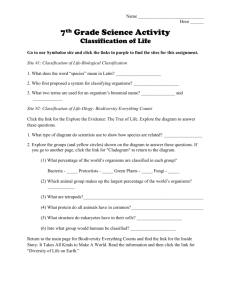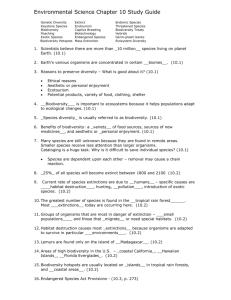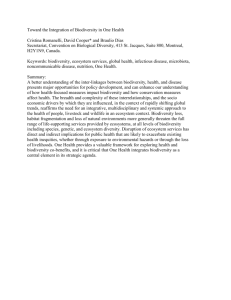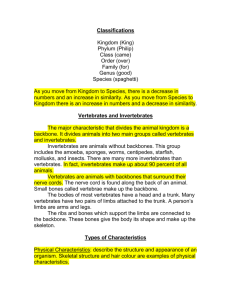field-journal-adventure (1) finals
advertisement
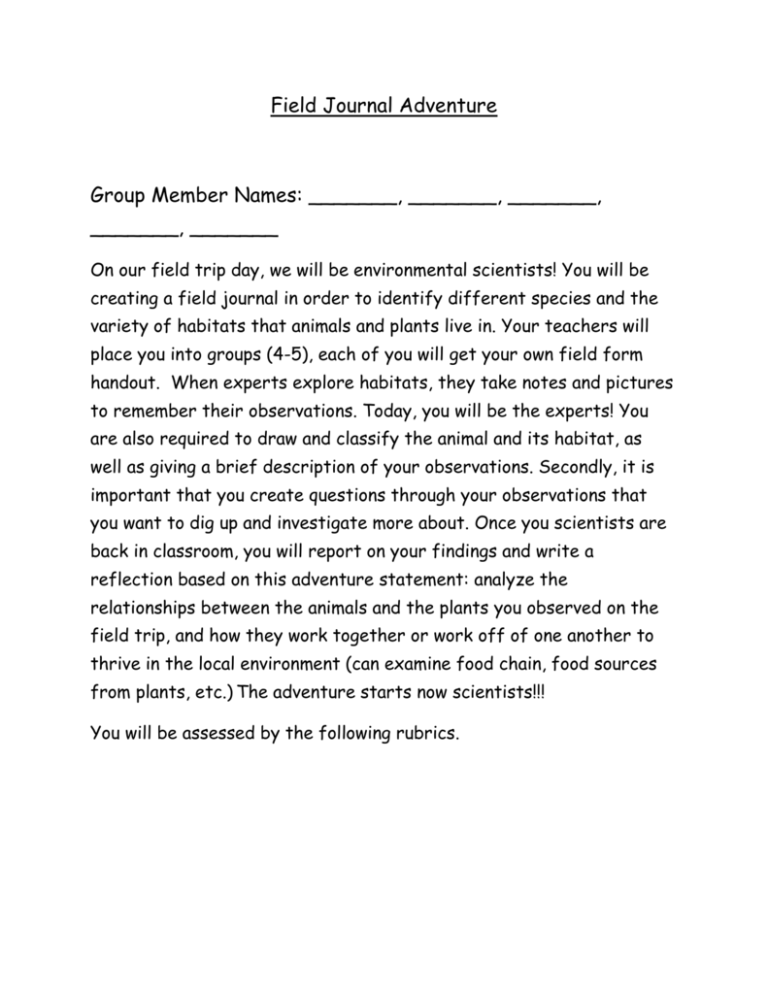
Field Journal Adventure Group Member Names: _______, _______, _______, _______, _______ On our field trip day, we will be environmental scientists! You will be creating a field journal in order to identify different species and the variety of habitats that animals and plants live in. Your teachers will place you into groups (4-5), each of you will get your own field form handout. When experts explore habitats, they take notes and pictures to remember their observations. Today, you will be the experts! You are also required to draw and classify the animal and its habitat, as well as giving a brief description of your observations. Secondly, it is important that you create questions through your observations that you want to dig up and investigate more about. Once you scientists are back in classroom, you will report on your findings and write a reflection based on this adventure statement: analyze the relationships between the animals and the plants you observed on the field trip, and how they work together or work off of one another to thrive in the local environment (can examine food chain, food sources from plants, etc.) The adventure starts now scientists!!! You will be assessed by the following rubrics. Field Journal Rubric 4 Knowledge and Understanding Vocabulary Application 3 2 1 Student considerably demonstrates their knowledge and understanding of concepts Student uses a considerable amount of proper scientific vocabulary when discussing biodiversity Student considerably demonstrates how to classify organisms they found based on their characteristics (invertebrates, vertebrates; body parts, functions etc.) Student demonstrates some of their knowledge and understanding of concepts Student somewhat uses proper scientific vocabulary when discussing biodiversity Student demonstrates limited knowledge and understanding of concepts Student uses limited to no proper scientific vocabulary when discussing biodiversity Student somewhat demonstrates how to classify organisms they found based on their characteristics (invertebrates, vertebrates; body parts, functions etc.) Student demonstrate how to classify organisms they found based on their characteristics (invertebrates, vertebrates; body parts, functions etc.) 3 Student uses a considerable amount of proper scientific vocabulary when discussing biodiversity Student considerably illustrates the relationships between organisms in an ecosystem by using their knowledge of classifying species 2 Student somewhat uses proper scientific vocabulary when discussing biodiversity Student somewhat illustrates the relationships between organisms in an ecosystem by using their knowledge of classifying species 1 Student uses limited to no proper scientific vocabulary when discussing biodiversity Student illustrates the relationships between organisms in an ecosystem by using their knowledge of classifying species with little to no effectiveness Student thoroughly demonstrates their knowledge and understanding of concepts Student uses proper scientific vocabulary when discussing biodiversity Student thoroughly demonstrate how to classify organisms they found based on their characteristics (invertebrates, vertebrates; body parts, functions etc.) Post Field Trip Reflection Rubric Vocabulary Analysing Relationships/ Applying Knowledge 4 Student uses proper scientific vocabulary when discussing biodiversity Students thoroughly illustrate the relationships between organisms in an ecosystem by using their knowledge of classifying species
